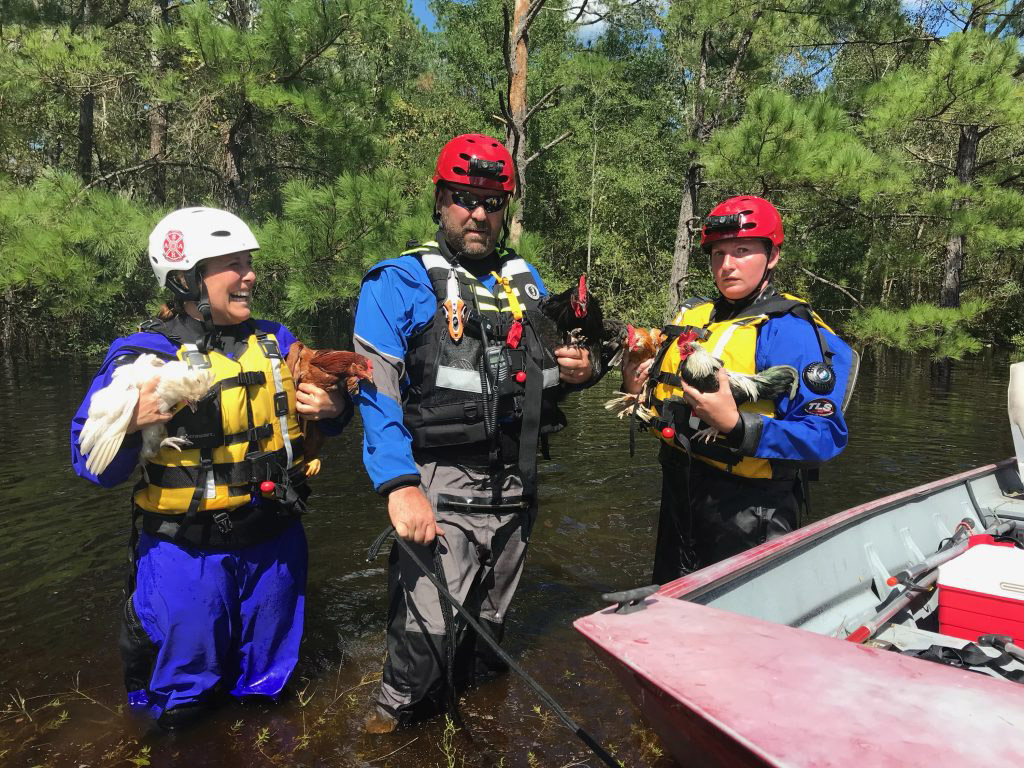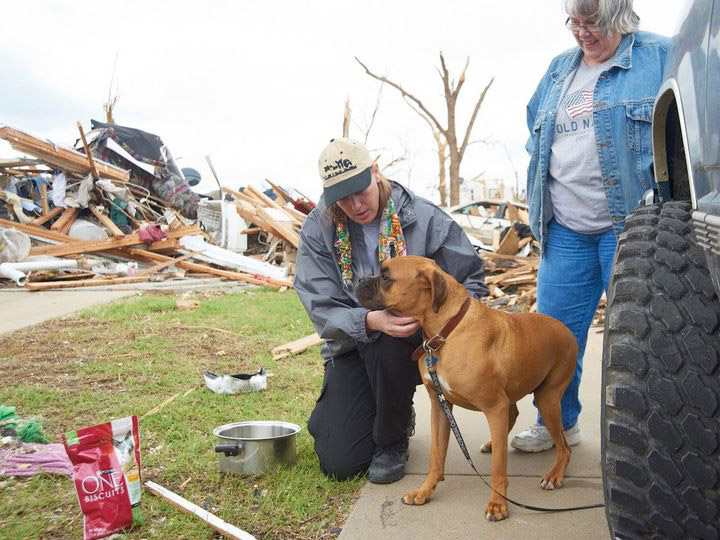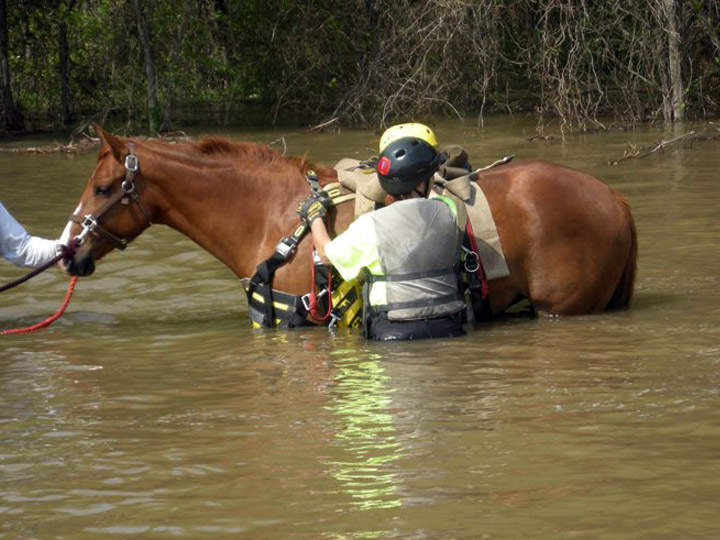Disaster Preparedness
Keep Your Animals Safe During a Disaster!
Disaster Preparedness for Pets
Why You Need to Be Prepared
Every member of your family should know what he or she needs to take when you evacuate. You also need to prepare supplies for your pet. Stock up on non-perishables well ahead of time and have everything ready to go at a moment’s notice. Keep everything accessible, stored in sturdy containers (duffel bags, covered trash containers, etc.) that can be carried easily.
If you reside in an area prone to certain seasonal disasters, such as flooding or hurricanes that might require evacuation, create a kit to keep in your car.

Your Pet Disaster Kit Should Include:
- Medications and medical records stored in a waterproof container and a first aid kit. A pet first aid book is also good to include.
- Sturdy leashes, harnesses and carriers to transport pets safely and to ensure that your pets can’t escape. Carriers should be large enough for the animal to stand comfortably, turn around and lie down. Your pet may have to stay in the carrier for hours at a time while you are away from home. These may require blankets or towels for bedding and warmth and other special items.
- Current photos and descriptions of your pets to help others identify them in case you and your pets become separated and to prove that they are yours.
- Food and water for at least five days for each pet, bowls and a manual can opener if you are packing canned pet food.
- Information about your pets’ feeding schedules, medical conditions, behavior problems and the name and number of your veterinarian in case you have to board your pets or place them in foster care.
- Pet beds and toys, if you can easily take them, to reduce stress.
If You Evacuate...Take Your Pets!
- The single most important thing you can do to protect your pets if you evacuate is to take them with you. Animals left behind in a disaster can easily be injured, lost or killed. Animals left inside your home can escape through storm damaged areas, such as broken windows. Animals turned loose to fend for themselves are likely to become victims of exposure, starvation, predators, contaminated food or water or accidents.
- If you leave, even if you think you may be gone only for a few hours, take your animals. Once you leave your home, you have no way of knowing how long it will be until you are able to return.
- If you know that threatening weather is imminent, leave early. An unnecessary trip is far better than waiting too long to leave safely with your pets. If you wait to be evacuated by emergency officials, you may be told to leave your pets behind.
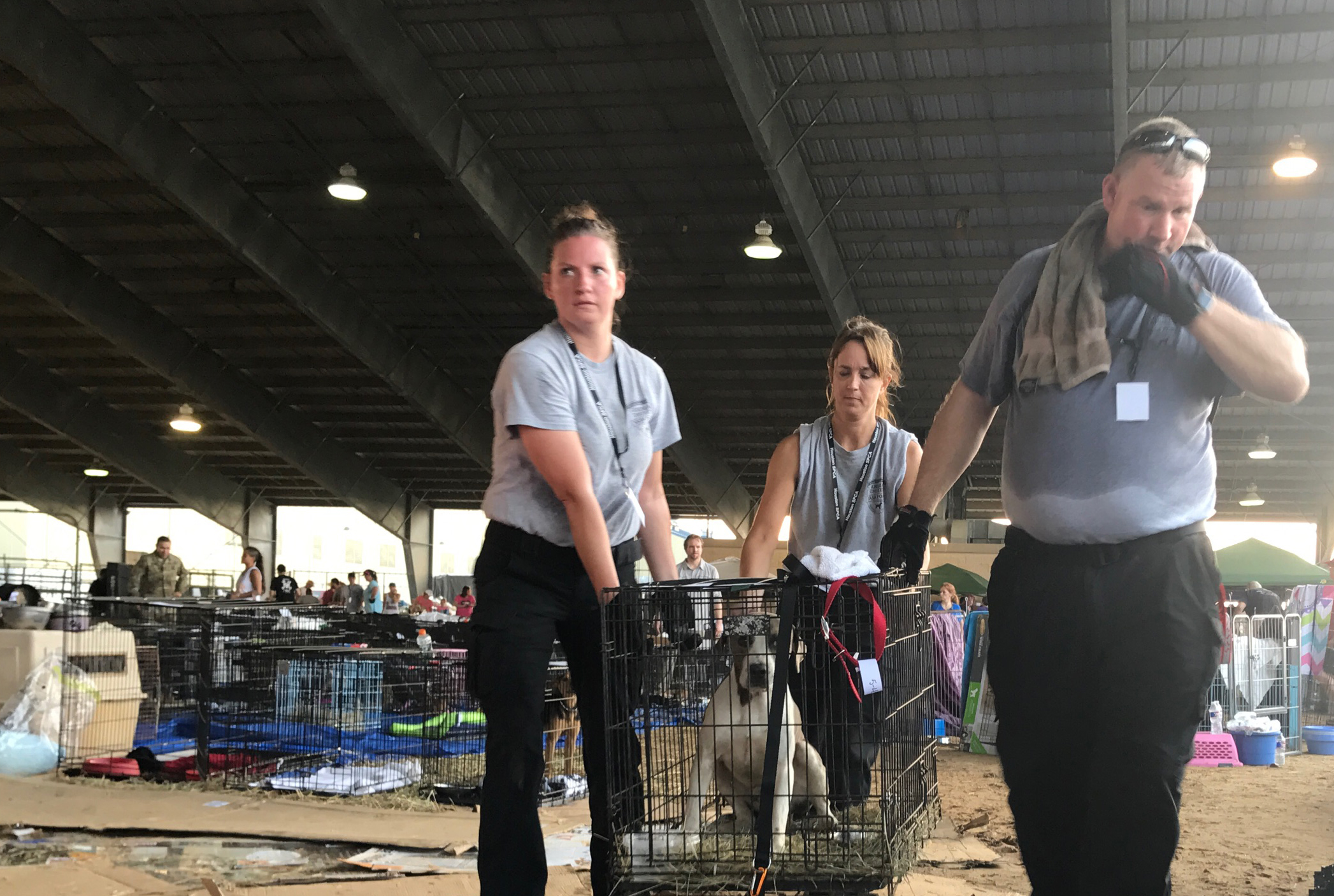
Don’t Forget ID
- Your pet should be wearing up-to-date identification at all times. This includes having your mobile phone number on your pet’s tag.
Find a Safe Place Ahead of Time
- Because evacuation shelters generally don’t accept pets (except for service animals), you must plan ahead to ensure that your family and pets will have a safe place to stay. Don’t wait until disaster strikes to do your research.
- Contact hotels and motels outside your immediate area to check policies on accepting pets. Ask about any restrictions on number, size and species. Ask if “no pet” policies would be waived in an emergency. Make a list of pet-friendly places and keep it handy.
- Check with friends, relatives or others outside your immediate area. Ask if they would be able to shelter you and your animals or just your animals, if necessary.
- Make a list of boarding facilities and veterinary offices that might be able to shelter animals in emergencies; include 24-hour telephone numbers.
Disaster Preparedness for Horses
Why You Need to Be Prepared
Disaster preparedness is important for all animals, but it takes extra consideration for horses because of their size and the requirements for transporting them. Disasters can happen anywhere and include barn fires, hazardous materials spills, propane line explosions and train derailments, all of which may necessitate evacuation. It is imperative that you are prepared to move your horses to a safe area.
During an emergency, the time you have to evacuate your horses will be limited. With an effective emergency plan, you may have enough time to move your horses to safety. If you are unprepared or wait until the last minute to evacuate, you could be told by emergency management officials that you must leave your horses behind. Once you leave your property, you have no way of knowing how long you will be kept out of the area. To help you avoid this situation, we have prepared information and suggestions to help you plan for emergencies.
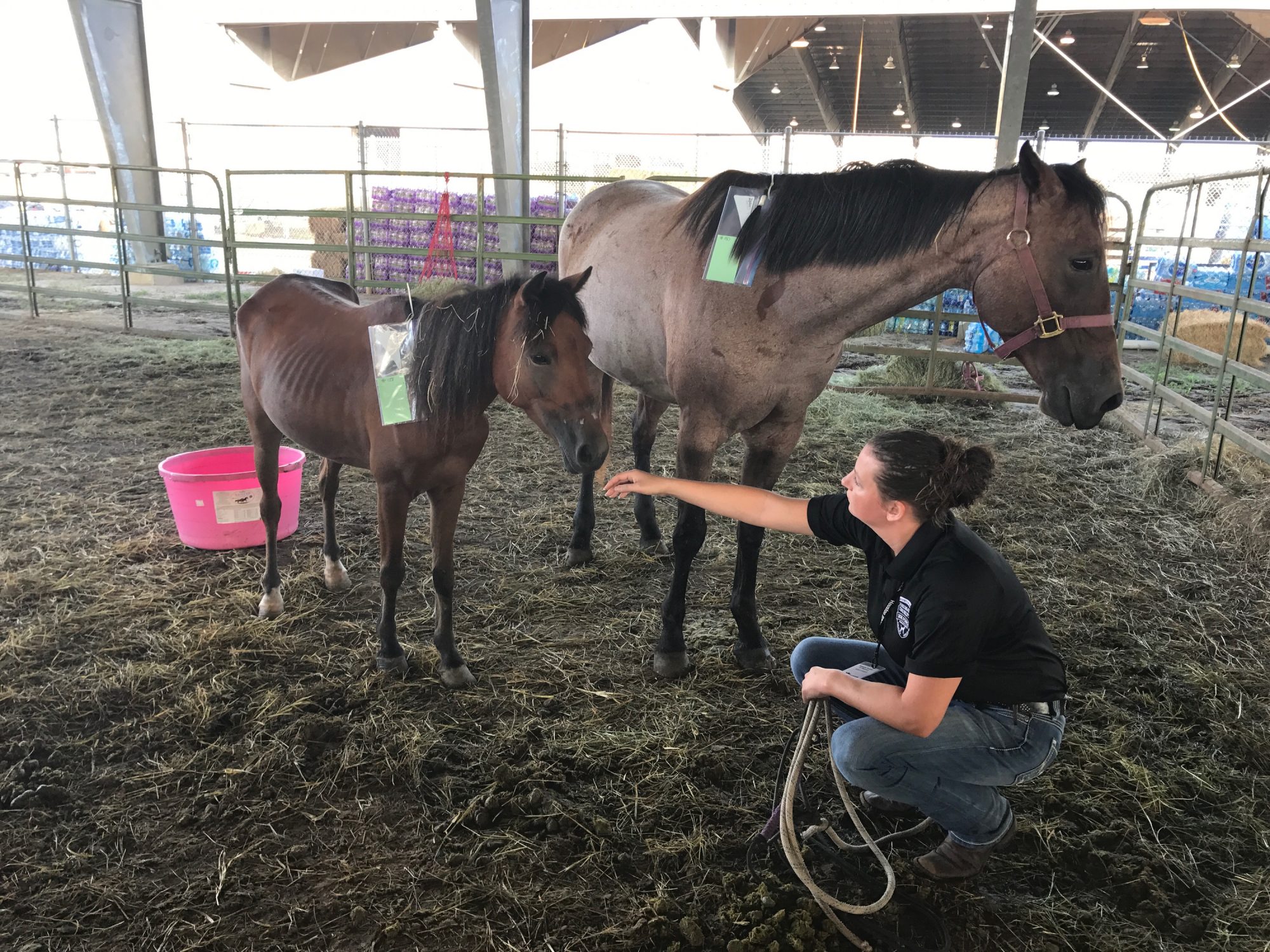
Horse Evacuation Tips
- Make arrangements in advance to have your horse trailered in case of an emergency. If you do not have your own trailer or do not have enough trailer space for all of your horses, be sure you have several people on standby to help evacuate your horses.
- Know where you can take your horses in an emergency evacuation. Make arrangements with a friend or another horse owner to stable your horses if needed. Contact your local animal care and control agency, agricultural extension agent or local emergency management authorities for information about shelters in your area.
- Inform friends and neighbors of your evacuation plans. Post detailed instructions in several places — including the barn office or tack room, the horse trailer and barn entrances — to ensure they are accessible to emergency workers in case you are not able to evacuate your horses yourself.
- Keep halters ready for your horses. Each halter should include the following information: the horse’s name, your name, your telephone number and another emergency telephone number where someone can be reached.
- Place your horses’ Coggins tests, veterinary papers, identification photographs and vital information — such as medical history, allergies and emergency telephone numbers (veterinarian, family members, etc.) — in a watertight envelope. Store the envelope with your other important papers in a safe place that can be quickly reached.
- Prepare a basic first aid kit that is portable and easily accessible.
- Be sure to have on hand a supply of water, hay, feed and medications for several days for each horse you are evacuating.
- There may be times when taking your horses with you is impossible during an emergency. Consider different types of disasters and whether your horses would be better off in a barn or loose in a field.
Disaster Preparedness for Livestock
Why You Need to Be Prepared

Livestock Evacuation Tips
- Evacuate animals as soon as possible. Be ready to leave once the evacuation is ordered. In a slowly evolving disaster, such as a hurricane, leave no later than 72 hours before anticipated landfall, especially if you will be hauling a high-profile trailer such as a horse trailer. If there are already high winds, it may not be possible to evacuate safely.
- Arrange for a place to shelter your animals. Plan ahead and work within your community to establish safe shelters for farm animals. Potential facilities include fairgrounds, other farms, racetracks, humane societies, convention centers, and any other safe and appropriate facilities you can find. Survey your community and potential host communities along your planned evacuation route.
- Set up safe transportation. Trucks, trailers and other vehicles suitable for transporting livestock (appropriate for transporting each specific type of animal) should be available, along with experienced handlers and drivers.
- Take all your disaster supplies with you or make sure they will be available at your evacuation site. You should have or be able to readily obtain feed, water, veterinary supplies, handling equipment, tools and generators if necessary.
- If your animals are sheltered off your property, make sure that they remain in the groupings they are used to. Also, be sure they are securely contained and sheltered from the elements if necessary, whether in cages, fenced-in areas or buildings.
Farm Disaster Kit
- Current list of all animals, including their location and records of feeding, vaccinations and tests. Make this information available at various locations on the farm. Make sure that you have proof of ownership for all animals.
- Supplies for temporary identification of your animals, such as plastic neckbands and permanent markers to label your animals with your name, address and telephone number.
- Handling equipment such as halters, cages and appropriate tools for each kind of animal.
- Water, feed and buckets.
- Tools and supplies needed for sanitation.
- Disaster equipment such as flashlights, portable radios and batteries.
- Other safety and emergency items for your vehicles and trailers.
- Food, water and disaster supplies for your family. Your local humane organization, agricultural extension agent or local emergency management agency may be able to provide you with information about your community’s disaster response plans.
Sheltering in Place
Survey your property for the best location for animal sheltering. If your pasture area meets the following criteria, your large animals may be better off out in the pasture than being evacuated:
- No exotic (nonnative) trees, which uproot easily
- No overhead power lines or poles
- No debris or sources of blowing debris
- No barbed-wire fencing (woven-wire fencing is best)
- Not less than one acre in size (if less than an acre, your livestock may not be able to avoid blowing debris)
